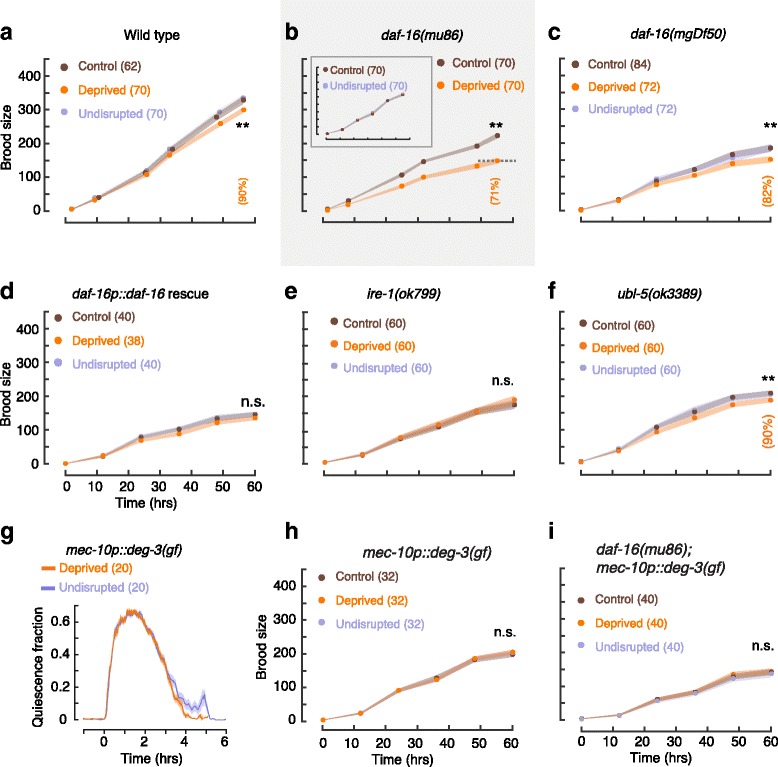Fig. 6.

Worm sleep deprivation reduces brood size. a Brood sizes of wild-type animals during the first 3 days after L4 lethargus (t = 0 is 10–12 h after the fourth molt). Prior to the assay, animals were exposed to the 12-h deprivation protocol. The control group was stimulated ouside of lethargus, and the undisrupted group was not stimulated (see Methods). The dotted line depicts the brood size of deprived animals at the latest time point (see also Fig. 7a). Inset: undisrupted and control animals were indistinguishable. b, c The same as a for daf-16(mu86) and daf-16(mgDf50) mutants. d The same as a for daf-16(mgDf50) mutants where expression of daf-16 cDNA was driven by the daf-16 native promoter. e, f The same as a for UPRER deficient ire-1 mutants and UPRmt deficient ubl-5 mutants. The wild-type phenotype was exhibited by ubl-5 mutants, but fecundity was not reduced in ire-1 mutants. g Quiescence fraction during L4 lethargus of animals deficient in touch sensation (mec-10p::deg-3(gf)), whose responses to vibrations were mostly or entirely abolished (see also Additional file 4: Figure S4). h, i The same as a for transgenic animals deficient for touch sensation on wild-type or daf-16 mutant backgrounds. Shaded areas depict mean ± SEM, numbers of animals assayed are noted in parentheses, and double asterisks denote a significant difference in brood size at t = 60 h (p < 0.01)
